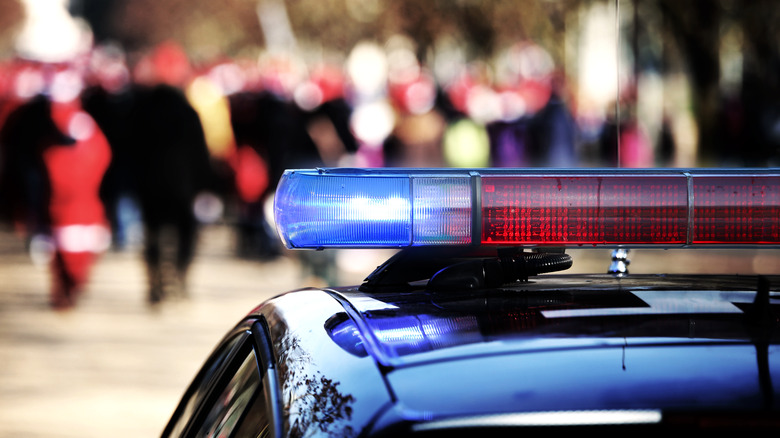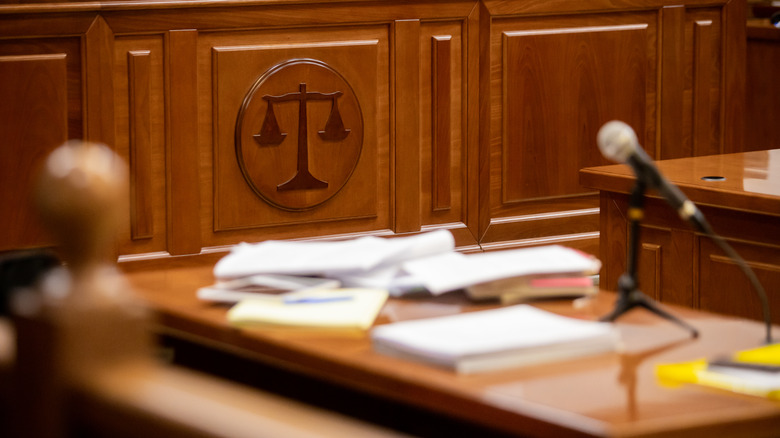Just 4 Years After The Zodiac, Other Killers Prowled The Streets Of San Francisco
The random killings on the streets of San Francisco began on October 19, 1973, in a city still rattled by the infamous Zodiac Killer's gruesome work that ended just four years earlier. That evening, someone kidnapped a couple who lived in the Telegraph Hill neighborhood off of the street and threw them into a white van. They sexually assaulted the woman before beheading her and attacking her husband with a machete. He survived.
It was the beginning of a wave of brutal violence over more than six months, with 20 attacks using guns and other weapons that left 14 people dead in what would be called the Zebra Killings, named after the radio band the police used during the investigation. One survivor, Art Agnos, who was shot twice, would later become mayor of San Francisco. The attacks seemed random except for the choice of victims — they were white. And the survivors said their attackers were Black. In a last-ditch attempt to track down the mysterious killers, the San Francisco Police Department took a drastic step that, to many residents, smacked of racism.
SFPD takes drastic measures
"The city was in panic," retired homicide inspector Gus Coreris, who was in charge of the task force to hunt down the killers, told CBS Bay Area. "People were scared going out at night." So Mayor Joe Alioto instituted a city-wide stop and search of any Black men between the ages of 20 and 30 who were 5 feet, 9 inches to 6 feet tall and matched a composite picture the police had made of one suspect, according to UPI. "This is an extraordinary situation and it calls for extreme measures," the mayor told the news agency in April 1974, claiming it wasn't about race. Many begged to differ.
The police stopped and questioned residents and gave them a "zebra check card" that they had to show when stopped. "It was the first time, in my recollection, that Blacks were considered to be serial killers," San Francisco resident and activist Darrell Rogers told FoundSF. He and 18 other young Black men started "Operation Cleanup," a group in opposition to the city's abuse of power that refused to submit to the searches. According to Diva, another organization, the Committee Against Racism, rallied against the police procedures that one member called "a racist attack " since Black men were "being stopped and given ID cards and arrested and intimidated." In the end, it wasn't the harsh random stop-and-search police tactics that caught the serial killers, but the help of an informant.
Capture and trial
Anthony C. Harris, who said he witnessed some of the crimes, told the police the men behind the killings were part of a sect of Black Muslims called the "Death Angels" whose aim was to murder whites. On May 1, 1974, the police arrested seven people, four of whom they later released for a lack of evidence. Police charged the other three — along with a fourth suspect who was by then in prison on separate charges — with three of the murders and four of the assaults in which the victims survived. Prosecutors said the defendants were randomly targeting whites in order to launch a race war.
On March 29, 1976, a racially mixed jury found J.C.X. Simon, Larry Green, Manuel Moore, and Jesse Lee Cooks — all in their 20s or early 30s — guilty of murder, kidnapping, conspiracy, and other charges. A judge later sentenced them all to life in prison. They continued to maintain their innocence. The state refused to parole them, and all but Larry Green, who is still alive, died in prison.
If you or anyone you know has been a victim of sexual assault, help is available. Visit the Rape, Abuse & Incest National Network website or contact RAINN's National Helpline at 1-800-656-HOPE (4673).


